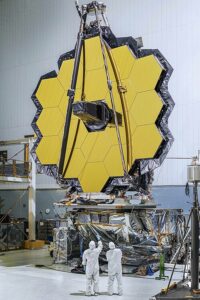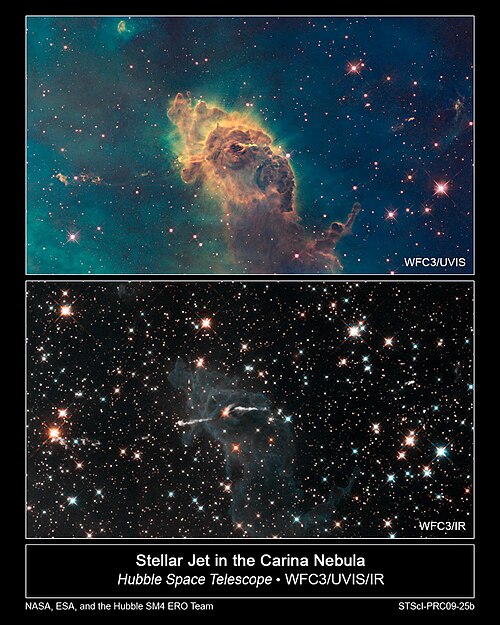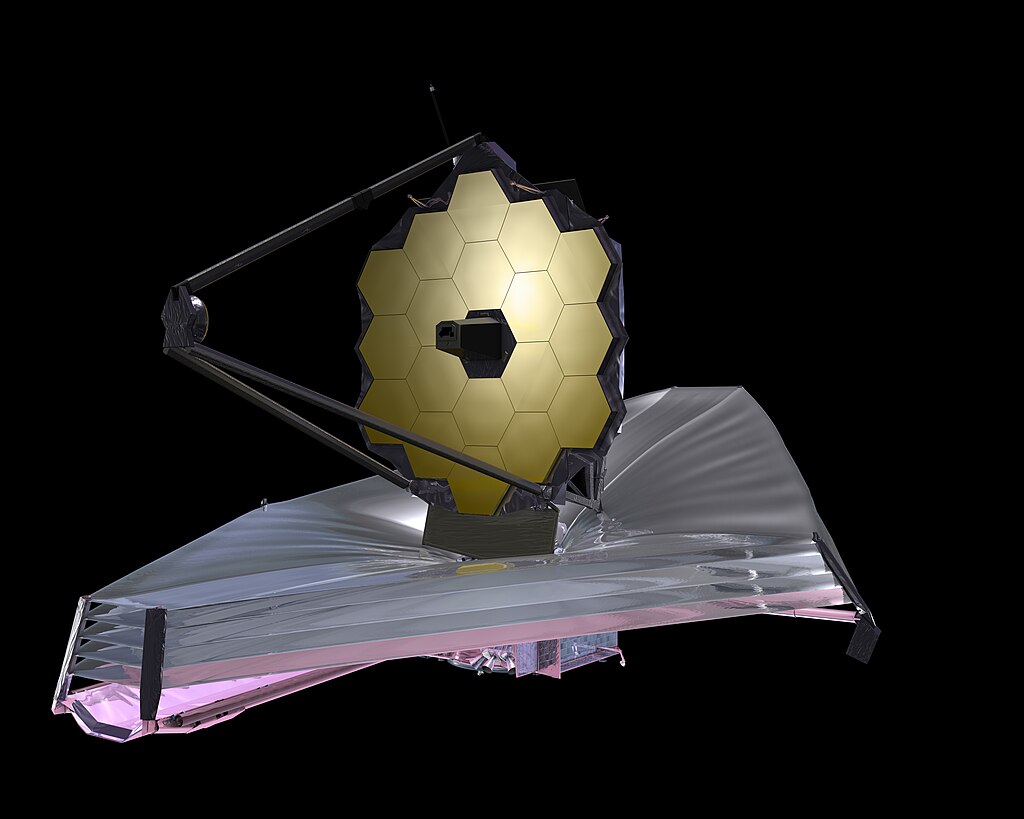James Webb Telescope Unveils Cosmic Secrets
The James Webb Space Telescope, launched in December 2021, is a powerful tool for exploring the universe’s mysteries, surpassing Hubble’s capabilities by using infrared light to reveal previously hidden stars and galaxies. Its groundbreaking discoveries and advanced technology enhance our understanding of the cosmos, inspiring awe and curiosity about what lies beyond.
The James Webb Space Telescope: An Overview
The James Webb Space Telescope, located a million miles from Earth, features a 6.5-meter gold-coated mirror that captures faint light from distant objects. Developed through collaboration between NASA, Europe, and Canada, Webb focuses on infrared observations, allowing it to see through cosmic dust and examine ancient galaxies. Launched in 2021, it has begun sending remarkable images and aims to study star and planet formation, exoplanet atmospheres, early galaxy development, and the mysteries of dark matter and dark energy.
Development and Launch History
Building the James Webb Space Telescope was a monumental challenge that began in the 1990s as the “Next Generation Space Telescope.” Thousands from NASA, ESA, and Canada faced numerous obstacles, including complex folding mirrors and a massive sunshield, causing costs to soar to

$10 billion and resulting in delays, especially during COVID. However, it successfully launched on Christmas Day 2021 and unfolded in space without issues. By mid-2022, it was delivering stunning images, showcasing the remarkable achievements of human perseverance.
Observing the First Galaxies and Stars
The James Webb Telescope captures the universe’s baby pictures, revealing galaxies and stars from just a few hundred million years after the Big Bang, with its infrared capabilities allowing it to detect ancient light. It has discovered objects like GN-z11, an unexpectedly advanced galaxy.

Studying Population III stars, the universe’s first illuminators, to understand their composition. Webb’s spectrographs act as cosmic detectives, uncovering chemicals in these early galaxies and prompting a reevaluation of our understanding of the universe’s origins.
Studying Galaxy Formation and Evolution
Webb’s also digging into how galaxies go from tiny clumps to the massive spirals and clusters we see today. It’s like watching a cosmic movie, catching galaxies at different ages. Its infrared vision cuts through the dust to show star-forming hotspots and black holes hiding in galaxy centers. Stuff like the CEERS survey shows how early galaxies smashed together to grow big faster than anyone guessed. Webb’s data on gas and chemicals tells us what fueled these galaxies over billions of years. It’s kind a humbling to see our Milky Way as just one piece of this huge story. Every new image tweaks our ideas about how the universe built itself up, and I’m betting more surprises are coming.
Investigating Star and Planet Formation
Ever wonder how stars and planets are born? Webb’s got the inside scoop. It zooms into cloudy nurseries like the Orion Nebula, where stars are forming inside dusty cocoons. Its sharp images show protostars and the disks where planets might pop up, plus it catches the chemical vibes in there stuff that could make future worlds. Webb’s also spotted young stars shooting out jets, shaping their neighborhoods. It’s even checking out weirdos like brown dwarfs and rogue planets. This all helps us figure out why some stars end up huge, and others stay small and how our own Sun and planets came to be. It’s like Webb’s giving us a backstage pass to the universe’s baby-making factory.
Breakthrough Discoveries by JWST
Since James Webb Telescope started snapping pics in 2022, it’s been dropping bombshells left and right. It’s found galaxies so old they’re messing with our ideas about the universe’s early days. It’s sniffed out chemicals in exoplanet air, getting us closer to spotting livable worlds. Those images—like the Carina Nebula’s starry cliffs are straight-up art, but they’re also packed with science about how stars are born. Webb’s digging into everything from black holes to the universe’s first light, and every discovery feels like a step closer to getting the big picture. It’s not just answering questions; it’s making us ask new ones, and I’m totally hooked on what’s next.
Advanced Infrared Technology and Its Role
James Webb Telescope infrared tech is the heart of its magic. It’s got tools like NIRCam for killer pics and NIRSpec for breaking down light to see what stuff’s made of. MIRI goes even deeper, catching star nurseries and dusty galaxies. Tiny shutters let it study hundreds of things at once, and coolers keep it frosty to avoid noise. This setup is perfect for catching light from the universe’s first galaxies or cool exoplanets. It’s like having X-ray vision for space, showing us hidden star births and galaxy vibes. Without this tech, we’d be blind to half the universe, so it’s a total game-changer.
JWST’s Role in Future Astronomy
James Webb Telescope just getting started, and it’s gonna shape astronomy for years. It’s digging into the universe’s biggest questions, from dark matter to alien life, and its data’s open for anyone to dive into. It’s teaming up with other telescopes, sparking new ideas, and getting kids excited about space. Those images are like a call to adventure, pushing us to keep exploring. Webb’s building a roadmap for what’s next, and I’m so here for the ride let’s see where it takes us.
Inspiring the Next Generation
James Webb Telescope firing up kids and dreamers everywhere. Those galaxy pics and nebula shots? They’re like posters for “Space is Awesome!” NASA’s got STEM programs tying Webb’s findings to classrooms, getting students hyped about science and engineering. Public events, like image reveals, make everyone feel part of the adventure. It’s not just astronomy. It’s coding, physics, and even art showing there’s a spot for everyone. Kids are analyzing real Webb data, which is just so cool. It’s planting seeds for the next big thinkers, the ones who’ll take us even farther into the stars. That’s the kind of legacy that gives you goosebumps.
Technical and Logistical Challenges
James Webb Telescope road to space was rough. Kicked off in the ‘90s, it hit every snag—crazy techs like the sunscreen and mirror took forever to nail. Costs shot up to $10 billion, and folks were not happy. Delays piled up, especially with COVID messing things up. Coordinating NASA, ESA, and Canada was like herding cats. Launch was just the start—unfolding in space was a gamble, and micrometeoroids have already dinged it. Then there’s the data flood—hundreds of gigs daily, needing serious tech to handle. But they pulled it off, and that’s what makes Webb’s wins feel like a big, hard-earned high-five.
Managing Expectations for Future Discoveries
James Webb Telescope blowing minds, but we got to keep it real. Not every image is gonna be a game-changer, and stuff like finding alien life might take years or not happen. With only a decade or two of fuel, tough choices on what to study are coming. Some answers lead to more questions, which is cool but can feel like a tease. Scientists are hyped, but they’re also like, “Let’s chill and see what we get.” It’s about playing the long game, sharing the journey, and not expecting a Hollywood ending. That way, every step forward feels like a win.
Conclusion
So, yeah, the James Webb Space Telescope? It’s like our VIP pass to the universe’s secrets. From spotting baby galaxies to sniffing out exoplanet air, it’s rewriting the cosmic story. That wild tech mirrors, sun shield, all of it lets it catch whispers from billions of years ago. Sure, it’s had hiccups, but that makes its wins sweeter. It’s not just science; it’s about that spark you feel staring at the stars, wondering what’s out there. Webb’s got more to show us, so stick around it’s gonna be one heck of a ride, and I’m so here for it.

